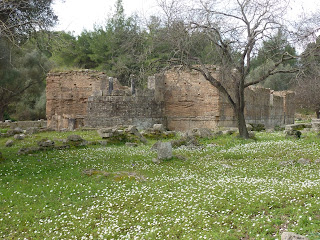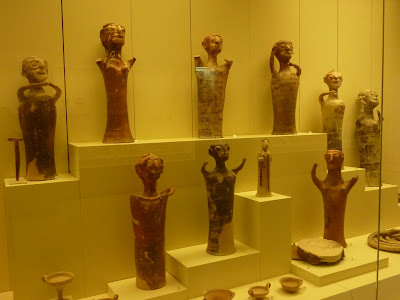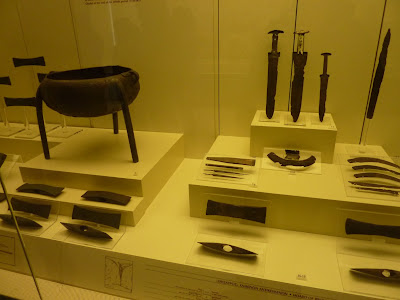 |
Along the row of Zanes, leading to the Stadium, once statues of various cheaters whose fines helped support the Games |
 |
Like every other religious site, Olympia was built on top of someone else's site; here a neolithic site more recently unearthed and explored |
 |
Remains of the Altar of Hera, where the Olympic Torch is lit every two years (summer/winter) |
 |
Temple of Hera |
 |
Vicki at Hera's; note profusion of wild flowers; spring in this part of the world |
 |
Olympic athletes were marinated in olive oil for both training and competition; and used these tubs to clean off afterwards |
 |
Another view of the gym and wild flowers |
 |
Site of Pheidias' workshop; a Christian church in the 6th century |
 |
Bases of the colonnaded Leonideion, a large hotel for officials, VIPs |
 |
Parting view of the Stadium, from the slopes of Kronos Hill |















































